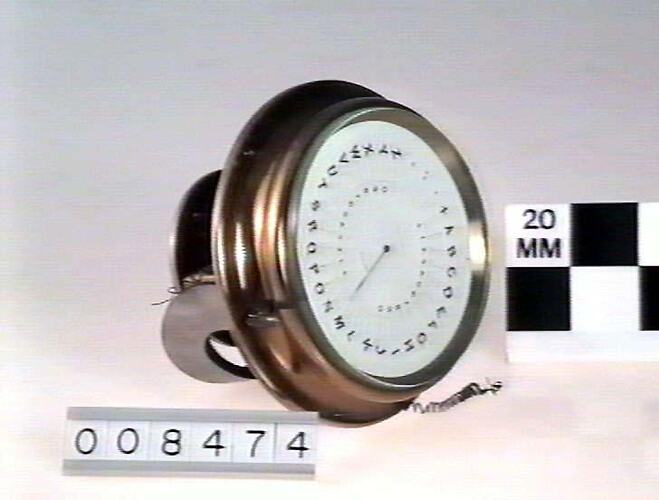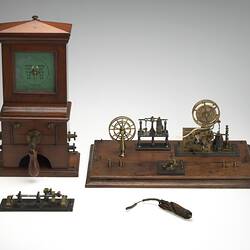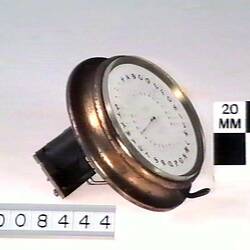Wheatstone's Alphabetical Telegraph
This system was invented by Sir Charles Wheaton in 1858, and was much used in Great Britain on private telegraph lines and small public lines before invention of the telephone. It was also used in Victoria on some lines before the introduction of the telephone. The apparatus consists of three parts - the Communicator, the Indicator, and the Bell.
The Communicator (No. 1, 3, 5 complete. No. 5 removed from case) is used to send messages, letter by letter. The handle is turned with one hand, and with the other the desired keys are pressed in turn. This causes alternating currents to be sent to lines which, on reaching the distant station, cause the indicator needle there to point successively to the same letters. The communicator is a magneto-electric machine in which the rotation of a soft iron armature A (see No. 5) creates alternating currents in coils C, C mounted on a permanent Magnet M. When a Key is depressed at any letter the current is cut off until the pointer is started again.
The Indicator (No. 2, and 4 complete; 6, 7 removed from cases) is a polarised electro-magnet, the armature oscillating between the poles. Each movement of the armature propels the indicating needle round the lettered dial by a pawl and ratchet action. Each alternation emitted from the Communicator causes one step onward of the indicator needle, so that the motions of both correspond.
A single line wire is used with earth return. No. 6 is the early form and 7 a later form of the mechanism of the Indicator. The Bell (No. 8 complete, 9 removed from case) is rung by clockwork which is set in action by the movement of an armature of a polarized electro-magnet. The Bell is switched on to the line in place of Indicator when waiting for a call.
(For full description see Preece & Sivewright's Telegraphy, Ninth Edition, p.79)
More Information
-
Keywords
-
Authors
-
Contributors
-
Article types







